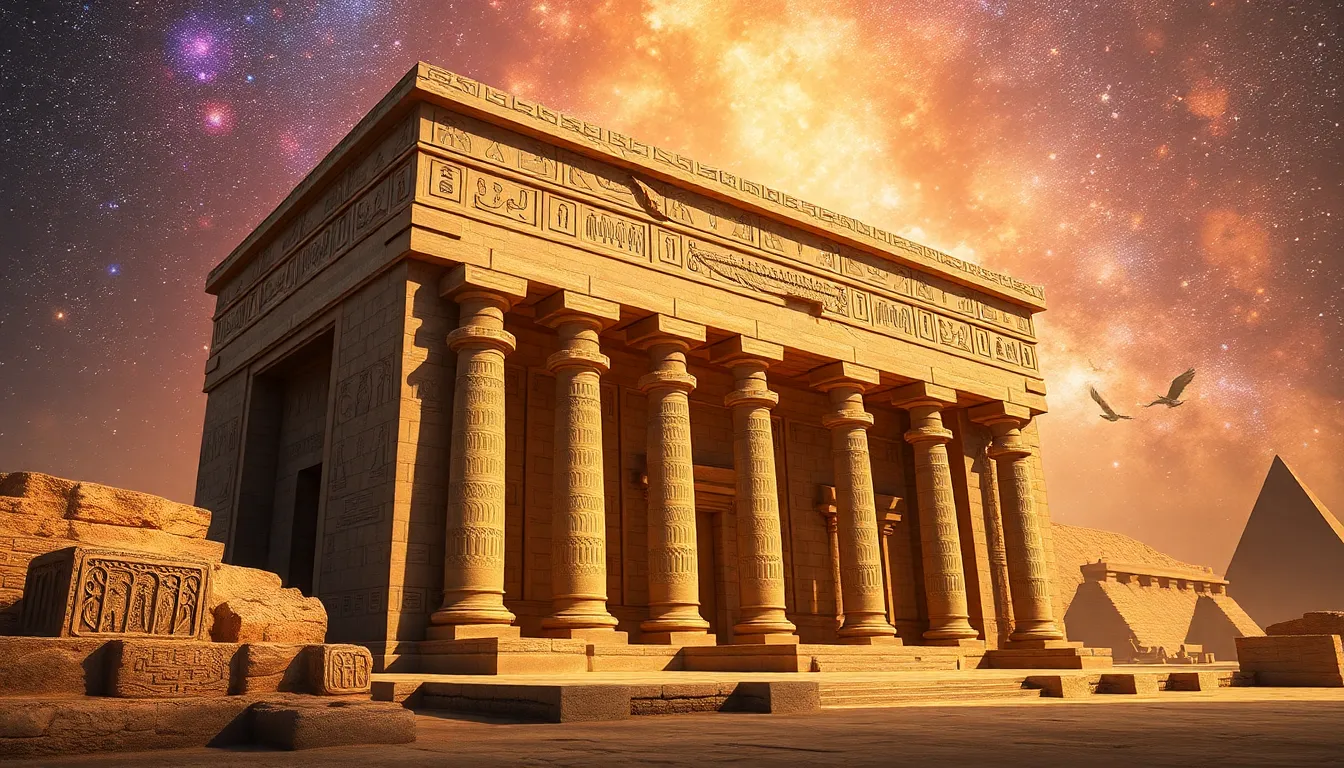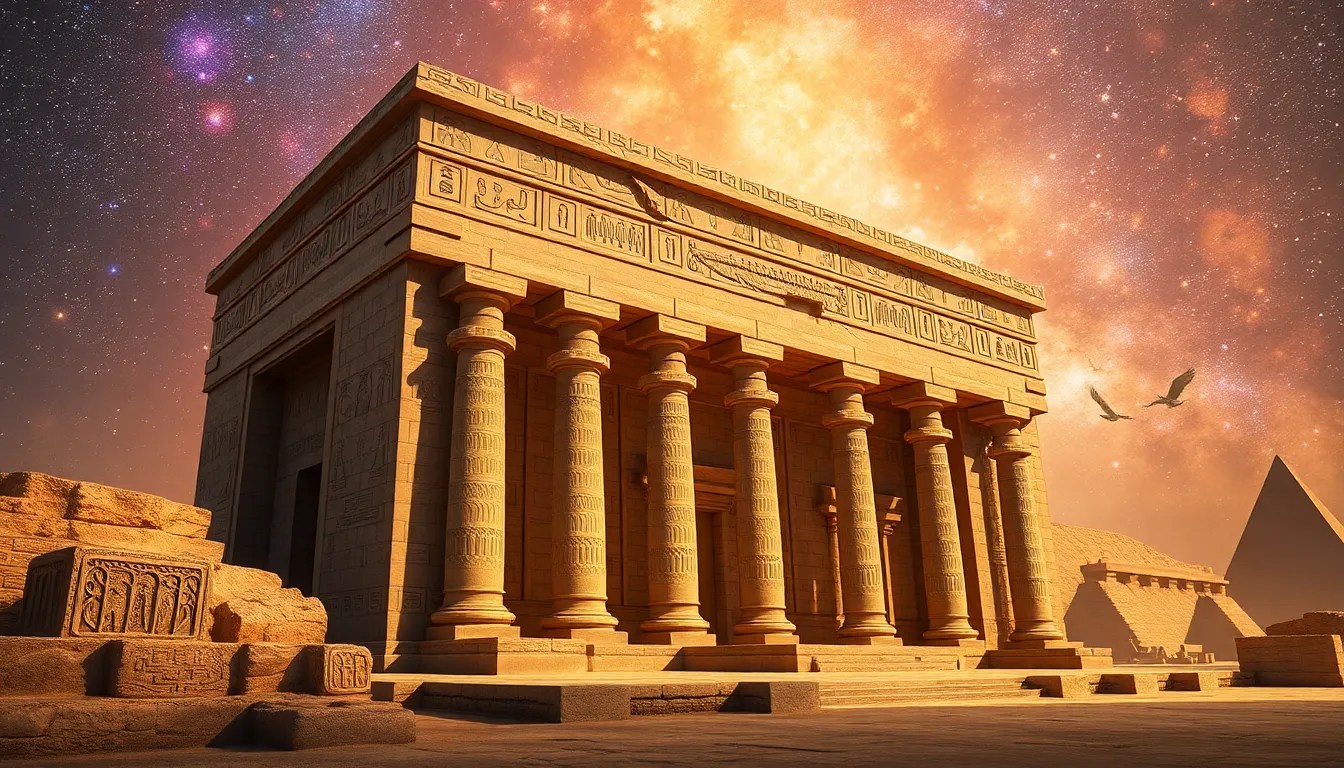The Cosmic Legacy of Ancient Egyptian Architecture
I. Introduction
Ancient Egyptian architecture stands as a testament to the ingenuity and spiritual depth of one of the world’s oldest civilizations. From the monumental pyramids of Giza to the grand temples of Karnak and Luxor, these structures were not merely functional; they embodied the beliefs, values, and cosmic understanding of the Egyptians. The significance of cosmic alignment and symbolism in their architecture reflects a profound relationship between the earthly and the divine.
This article aims to explore the intricate connections between ancient Egyptian architecture, mythology, and cosmology, highlighting how these elements shaped their architectural legacy.
II. Historical Context of Ancient Egyptian Architecture
The architectural styles of Ancient Egypt evolved significantly over the millennia, influenced by various dynastic changes and cultural shifts. Key periods include:
- Old Kingdom: The era of pyramid construction, marked by the development of the classic pyramid shape.
- Middle Kingdom: Characterized by advances in temple construction and elaborate mortuary complexes.
- New Kingdom: Known for grand temples and monumental structures that reflected the power of the pharaohs.
Key structures such as the Pyramids, temples, and mortuary complexes served both religious and political purposes. The geography, including the Nile River and the surrounding desert, greatly influenced architectural choices, dictating the materials used and the location of structures.
III. The Role of Cosmology in Egyptian Architecture
Cosmology played a pivotal role in the design and orientation of Egyptian architecture. The connection between architecture and mythology is evident in various aspects:
- Afterlife Concepts: Structures were designed as gateways or pathways to the afterlife, reflecting beliefs in resurrection and immortality.
- Celestial Bodies: The sun, stars, and planets were integral to architectural orientation, with many temples aligned with the rising and setting of celestial bodies.
This alignment was not arbitrary; it was a deliberate choice that underscored the importance of cosmic forces in daily life and spiritual beliefs.
IV. Case Study: The Great Pyramids of Giza
The Great Pyramids of Giza, particularly the Pyramid of Khufu, exemplify the zenith of ancient Egyptian architectural achievement. Key aspects include:
- Design and Construction Techniques: The pyramids were built using advanced engineering techniques, including precise stone cutting and transportation methods.
- Astronomical Alignments: The pyramids are aligned with incredible precision to the cardinal points, with the Great Pyramid’s sides closely aligned with true north.
- Symbols of Resurrection: The shape of the pyramid itself symbolizes the rays of the sun, serving as a staircase for the pharaoh to ascend to the heavens.
These features illustrate how the pyramids function as monumental representations of divine power and the afterlife.
V. Temples as Cosmic Gateways
Temples in ancient Egypt were more than places of worship; they were considered cosmic gateways. Key features include:
- Architectural Features: Temples such as Karnak and Luxor showcase massive columns, intricate carvings, and alignment with celestial occurrences.
- Rituals and Ceremonies: Many rituals were timed to coincide with celestial events, such as solstices and equinoxes, underscoring the connection between the temple and the cosmos.
- Replicas of the Cosmos: Temples were often designed to mirror the universe, with their layouts symbolizing the configuration of the heavens.
This relationship between temples and cosmic order reflects the Egyptians’ deep respect for the celestial realm and its influence on their lives.
VI. Sacred Geometry and Symbolism
The use of sacred geometry in ancient Egyptian architecture is a fascinating aspect of their design philosophy. Key points include:
- Geometrical Principles: The Egyptians employed precise mathematical ratios and shapes, such as the circle and the square, to create harmonious designs.
- Symbolism of Shapes: Different shapes held significant meanings; for example, circles represented eternity, while squares symbolized the earth.
- Geometry and Cosmic Beliefs: The relationship between geometry and the cosmos is evident in their use of geometry to reflect their understanding of the universe.
This profound connection between geometry and spirituality highlights the Egyptians’ belief in the order of the cosmos.
VII. Legacy and Influence on Future Civilizations
The legacy of ancient Egyptian architecture is evident in its impact on future civilizations:
- Greco-Roman Styles: Egyptian architectural elements influenced the design of temples and monuments in Greek and Roman cultures.
- Preservation of Cosmic Principles: Later cultures preserved aspects of Egyptian cosmology in their own architectural practices.
- Contemporary Interpretations: Modern architecture continues to draw inspiration from ancient Egyptian designs, reflecting a fascination with their monumental scale and symbolic depth.
The enduring influence of Egyptian architecture serves as a bridge connecting ancient beliefs with contemporary practices.
VIII. Conclusion
In summary, the cosmic significance of ancient Egyptian architecture lies in its intricate interplay between design, mythology, and cosmology. These monumental structures not only served practical purposes but also embodied the spiritual beliefs of a civilization that revered the cosmos.
The legacy of these ancient wonders continues to captivate and inspire, reminding us of the profound connections between architecture, mythology, and the universe. The study of ancient Egyptian architecture offers valuable insights into how the past shapes our understanding of the world and our place within it.




